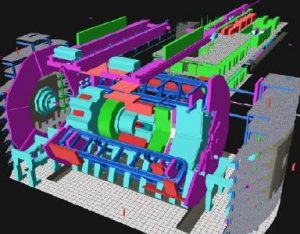CRS4 releases i3D, a system that combined for the first time the 3D input and high-performance rendering capabilities of high-end virtual reality systems with the data recovery capabilities of network browsers.
Using a Spaceball, the user could intuitively navigate through three-dimensional data, while selecting 3D objects with the mouse activated the retrieval of remote multimedia documents: text, still images, animations or even other 3D models.
Time-critical rendering techniques allowed the system to display complex 3D scenes at high and constant frame rates, making it possible to use them in the context of large-scale projects.
The system was used at CERN as a visualization and data management tool for the design of the then new Large Hadron Collider, and at CRS4 for the Virtual Sardinia project.
The original publication is the following:
- Jean-Francis Balaguer and Enrico Gobbetti. i3D: a high-speed 3D Web browser. In 1995 Symposium on the Virtual Reality Modeling Language (VRML `95). Pages 69-76. ACM Press, December 1995.




